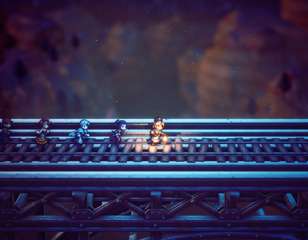Octopath Traveler 2 Review: "A monumental achievement"
Octopath Traveler 2 emerges as one of the best turn-based games you can play, so make sure to check out this review to see our full thoughts.
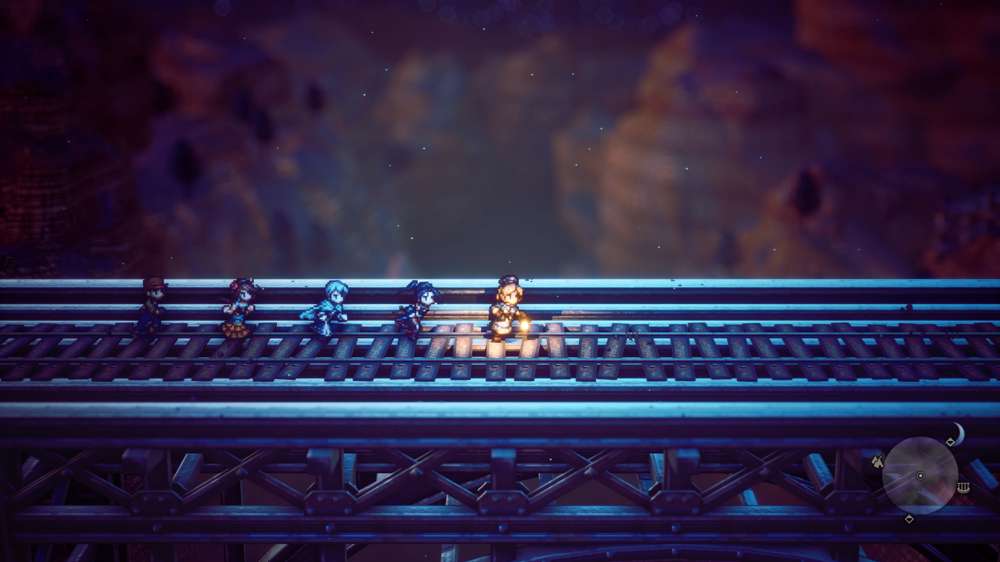
Franchise
Octopath
Platform(s)
Nintendo Switch, PlayStation 4, PlayStation 5, Windows, Xbox One, Xbox Series X/S
Released
24/02/2024
Developer
Square Enix Acquire
Genre
RPG
Publisher
Square Enix
Engine
Unreal Engine 4
Multiplayer
No
ESRB
Teen, Fantasy Violence, Mild Blood, Mild Language, Suggestive Themes, Use of Alcohol and Tobacco
Following on from its 2018 predecessor, Octopath Traveler 2 gives players eight new stories and an entirely new world to explore. Returning too is the recognisable HD-2D art style, alongside the acclaimed combat system that aims to impress for a second time.
Impressively though, Octopath Traveler 2 raises the bar in every way possible, proving to be a must-play experience that will likely stand among the greats of the genre in years to come.
A sprawling SaGa
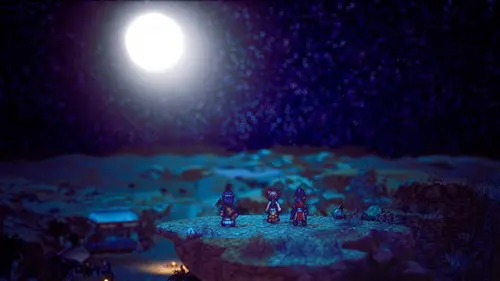
Octopath Traveler 2 largely follows the same narrative structure as its predecessor. Implicitly inspired by Square's SaGa series post-Romancing SaGa, you have eight characters to choose from at the start of the game - each with their own relatively isolated paths.
Your initial character choice broadly doesn't matter outside of their fixed position in your ever-rotating party, and you have the freedom to tackle the broader narrative in whatever way you like. While the recommended method is to acquire all eight characters and move through the game that way - but you could very easily only pick up four and do the game in two halves if you wanted.
Many players' concerns from the first game were due to its arguably disconnected narrative, where the eight characters felt almost entirely isolated from each other. While Octopath Traveler 2 does indeed follow roughly the same structure and only 'unifies' the party sporadically throughout, it rectifies this by offering eight paths that will stay with you for a very long time.
Octopath Traveler 2 achieves the impressive feat of having incredibly emotional stories filled with kinship within the confines of each individual character's narrative that beget the need for wider party interactions. My 'party' from a narrative perspective became the characters that I bonded with on all of my travels, and each denouement was a wonderful reminder of the characters and moments that I had become so deeply fond of.
Furthermore, due to the focus on the characters as stories themselves, I became far more attached to the eight members than I would if they had just been parts of an individual overall party. I will remember Temenos and his travels as affectionately as I would the protagonist of an entire game, and that extends eight-fold to all characters in a frankly remarkable way.
There are new additions to the game that aid in carving a connection between your party though. Travel banter returns from the first game - giving you smaller momentary conversations between two party members that further reinforce already flourishing characters. It is almost comforting to hear the mutterings and reactions of party members within the confines of each chapter, as a welcome reminder that these aren't tales that occur within a vacuum.
In addition to this, 'Crossed Paths' are new chapter types that focus on two characters as opposed to just one. While these aren't abundant throughout the game, they are just lovely to play through when they do pop up and crafted some of my favourite moments and interactions in the entire game.
Solisitia inquisition
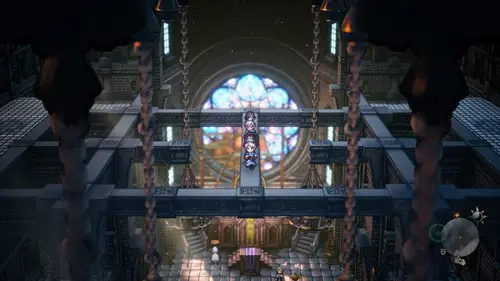
In support of these excellent individual stories is a nearly overwhelming amount of incredible writing hidden within Solisita and the people that inhabit it. Each interactable NPC you encounter throughout this vast world has their own backstory, which is fundamentally key in ensuring that each town feels alive and independent of your own existence.
I found Castti's 'Inquire' Path Action a particular joy, as it gives you a little paragraph on each character, which can range from their vast backstory to what they like to eat for dinner. You can so easily start to build entire worlds and histories within your head when talking to all of these people, which can quickly consume hours of your playtime as you seek to uncover the past within each town.
The approach to side quests in the form of Side Stories is utterly fantastic too, as it works almost in opposition to the more linear structure of the main path. While you might be used to side quests being directed distractions in other games, in Octopath Traveler 2 they serve more as discoveries or investigations that you must find through your own travels.
It could be a case of finding a midwife for a pregnant woman who happens to be in a completely different town, or you could instead find yourself uncovering the mystery of a mysterious box filled with horrors. The rather uncritical nature of many of these stories was a perfect compliment to the more pressing central paths, as the joy you gain from finally finding the answer to a problem you encountered 20 hours ago is unrivalled.
In support of this, Octopath Traveler 2 will be an absolute wonder for those who want to peer into all of the corners and shadows of Solisita. On an environmental level, there is always something that is hidden within plain sight, with consistently clever camera placement and level design obscuring new paths that lead to treasure and discovery.
Countless times throughout the game I was stunned by how certain paths and secrets were enshrouded into the nature of the world, with even mechanics like the day and night cycle uncovering new secrets. I never once got bored of probing each area for hidden walkways and obscured treasure, and this endeavour for discovery was very handsomely compensated too.
Turn-based mastery
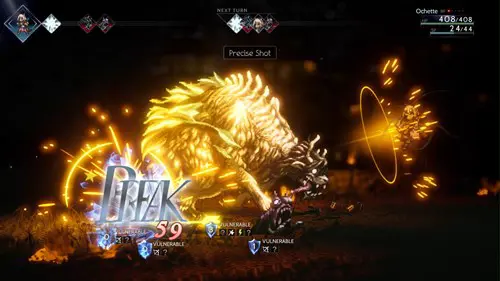
What you will often find within these dark corners however are tough foes, which let Octopath Traveler 2's outstanding turn-based combat system shine. While appearing rather straightforward at first, it unravels itself into a marvellously complex and consistently flexible amalgamation of everything fantastic about turn-based battles.
The general rhythm of the combat centres around discovering weaknesses and exploiting them to deplete an enemy's shield points. Once their shield points reach zero they will become 'broken', which prevents them from acting for a turn and enhances their damage taken.
What only enhances this further is the bonus points system, which lets you strengthen the power of an attack or multiply the number of times it is used. There is a constant balancing act that you must manage between using your BP to quickly break an enemy, or using it when they're broken to output massive damage. This keeps even the regular random encounters exciting, and can wonderfully engineer even the toughest fights in your favour.
Extending this balancing act further is the sheer amount of skills that each character has at their disposal. All of your party members have a primary job, passive talent, and a new limit break style Latent Power at their disposal, but you can also equip any of the eight roles in the game as a secondary job to any character, effectively doubling their skill set.
This allows you to completely customise how you want your characters to be and can craft some incredibly potent combinations too. Previously useful skills can suddenly become overpowered when combined with something from another job, and you might find that certain talents and latent powers work perfectly with skills that would otherwise be unattainable to a chosen party member.
Beyond this, there are also four secret jobs to find throughout your journey in Octopath Traveler 2 that offer unique and powerful skills for a single party member. While these are clearly the strongest jobs in the game, they are tactfully hidden throughout the world, which makes discovering them feel even more satisfying.
Balancing the scales
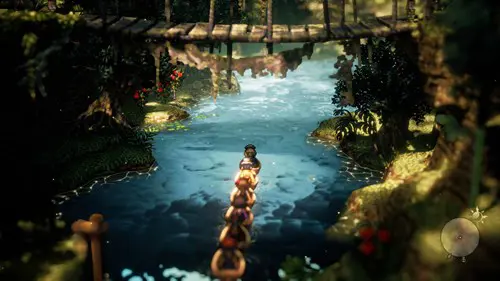
Grinding has become a bit of a dirty word in games like this, with many titles requiring you to purposefully and repeatedly seek out standard enemies in order to increase your level. Thankfully this is absolutely not the case within Octopath Traveler 2, with the balancing of levels across the eight characters managed extremely well.
You are implicitly encouraged to switch up your party throughout the game, as each character's Path Actions and specific skill sets suit particular scenarios more than others. While in other games I would moan that there isn't a wider XP distribution system, forcing me to use characters that I don't want to, Octopath Traveler 2 has each party member remain strong throughout and always encourages you to mix up your selections.
Furthermore, while they have largely crept out of fashion within the genre, I did find the random encounters to be one of the key factors in removing the necessity of grinding. I usually hate fighting standard mobs in other turn-based titles - as they oven devolve into time and resource consumption more than anything - but even after 60 hours I relished every single fight and the challenge it brought forward.
While random encounters help keep your party topped up, the real power comes however from your own strategy and equipment choices. Octopath Traveler 2 does an excellent job of removing a lot of the 'unfair' mechanics and strategies employed by tough enemies in other turn-based games, and instead gives you the opportunity to use your own strategy and tools to overcome a level barrier that might have otherwise been near-impossible to tackle.
HD-2D splendour
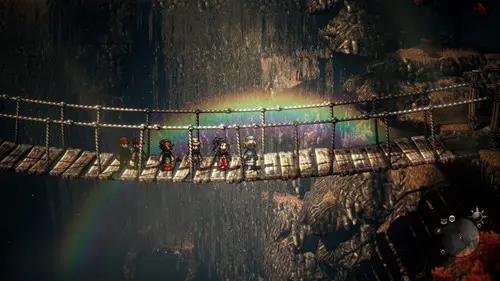
Despite being a sequel to the game that thrust the HD-2D style into the gaming sphere, I was still consistently taken aback by how utterly beautiful Octopath Traveler 2 was at any given moment in time. Every single area presents you with stunning visual spectacles that prove beyond any doubt that a game doesn't need to have the highest graphical fidelity in order to be impressive.
One of the most extraordinary aspects is how considerably it improves over the first game. While it still looked great, Octopath Traveler was prone to a persistent sheen, and at times lacked detail in its portraits.
This couldn't be further from the truth in the sequel though, with sources of light now feeling far more intentional and sparse - illuminating a thriving city in the dark of night, or bouncing off of the never-ending desert sands in the peak of midday. This is of course exacerbated by the ability to shift between night and day at will, but it all amounts to easily one of the best-looking games I've ever played.
There are also so many fantastic little touches that you can't help but appreciate within the visuals. The attention to detail within the character and weapon models is particularly wonderful, where each weapon has its own individual model that matches its description as opposed to one all-encompassing axe or sword. This intentionality with the design makes each area feel not only unique but positively alive and ensures that your explorations actually feel like a journey.
It didn't take me long to realise how special Octopath Traveler 2 is. It is a game that has so much to do and explore, but never feels overwhelming or watered down in any way. Featuring one of the best turn-based combat systems I've ever encountered, alongside an emotional and deeply connecting narrative on all fronts, Octopath Traveler 2 is truly a monumental achievement that confidently stands among some of the genre's finest entries.
5/5
Reviewed on PS5. Code provided by the publisher.
Comments

